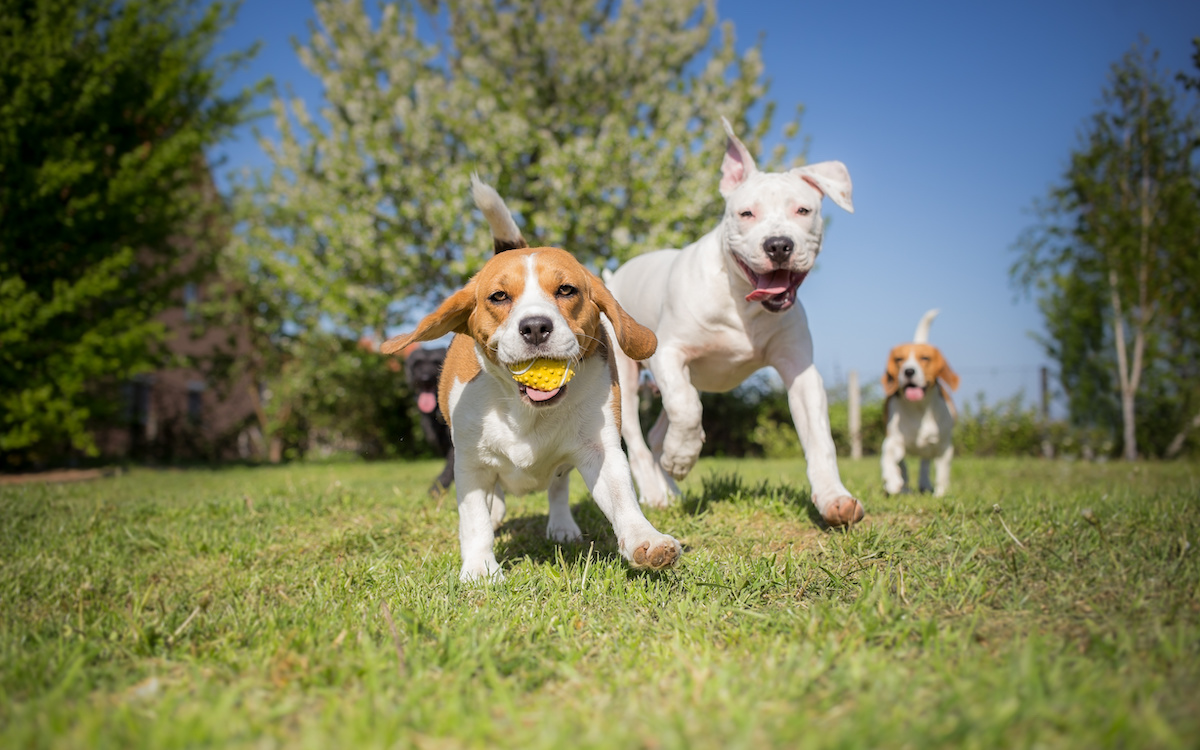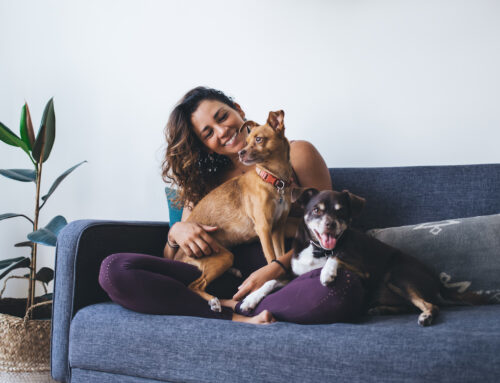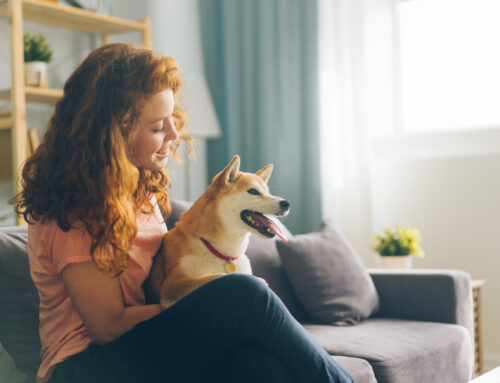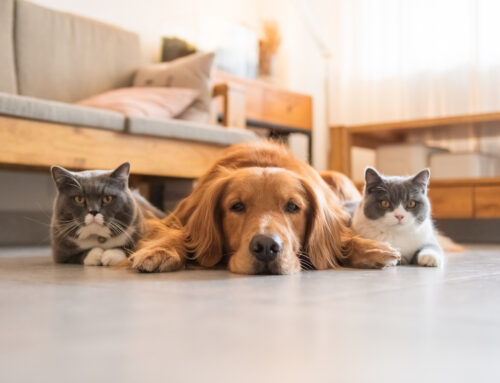As a pet owner, you want your dog to thrive in all social settings, from meeting new people to interacting with other pets. A well-socialized dog is generally happier, healthier, and more adaptable, allowing both you and your pet to enjoy life to the fullest. At Animal Care Center, we understand the importance of socialization and are here to guide you through the process. Let’s dive into some practical, gentle methods to help your dog become more social.
1. Start Early (But It’s Never Too Late)
If you have a puppy, the early months of life (8–16 weeks) are crucial for socialization. During this time, they’re more receptive to new experiences. However, adult dogs can also be socialized successfully with patience and consistency.
For puppies:
- Frequent, Positive Experiences: Introduce them to different sounds, smells, people, and animals gradually, ensuring that every experience is positive.
- Puppy Classes: Enroll in classes that allow controlled interactions with other puppies and people, which can improve confidence and social skills.
For older dogs:
- Gradual Exposure: Older dogs may be more cautious, so introduce them to new situations slowly.
- Reward Good Behavior: Use treats and praise to reward calm, friendly interactions.
2. Arrange Playdates with Other Dogs
Playdates can be a fun, effective way to boost your dog’s social skills. Begin with dogs that you know are friendly and social, as an overly aggressive or dominant dog may intimidate your pet.
- Choose the Right Dogs: Start with calm, gentle dogs that match your dog’s temperament and energy level.
- Neutral Territory: Meet in a park or another neutral location where neither dog feels territorial.
- Supervise Closely: Watch for signs of stress, like yawning, excessive panting, or trying to hide. If any of these occur, separate the dogs and give them a break.

3. Visit Dog-Friendly Parks and Cafés
Once your dog is comfortable with smaller social settings, consider taking them to dog-friendly parks or outdoor cafés. These places allow your dog to interact with a variety of people and pets.
- Observe from a Distance: Start by watching the scene from a distance to gauge your dog’s comfort level.
- Practice Leash Etiquette: Make sure your dog is trained to walk calmly on a leash, as this will help avoid tense situations.
- Reward Calm Behavior: Use treats and praise when your dog remains calm and friendly around other dogs or people.
4. Use Positive Reinforcement Training
Training is an essential tool in socialization, as it builds confidence and improves your dog’s behavior around others.
- Basic Commands: Teach your dog simple commands like “sit,” “stay,” “leave it,” and “come.” This will give you control during social interactions.
- Reward Calm Behavior: Reward calmness with treats, praise, or play. Avoid reinforcing any fearful or aggressive behavior by giving treats only when they are relaxed.
- Desensitize to New Environments: Gradually expose your dog to different sounds, people, and situations, rewarding them as they remain calm.
5. Attend Dog Training Classes
Professional dog training classes offer a structured environment to develop your dog’s social skills. Classes are typically tailored to different skill levels, from beginner to advanced, making them suitable for both puppies and older dogs.
- Controlled Setting: Classes allow your dog to interact with others in a controlled environment.
- Professional Guidance: Trainers can help address any behavioral issues and provide strategies for managing challenging situations.
- Social Confidence: Regular attendance builds your dog’s confidence and teaches them how to interact respectfully with other dogs and people.
6. Expose Your Dog to New Environments
Socialization isn’t just about other animals and people—it’s also about exposing your dog to a variety of environments, which helps them become comfortable in diverse settings.
- Take Short Trips: Gradually expose your dog to different places like busy streets, parks, and quiet neighborhoods.
- Go Slow: If your dog shows signs of discomfort, take a break and try again later. The goal is to keep each experience positive.
- Reward Adaptability: Reward calmness and positive behavior with treats, as this reinforces that new environments are safe.
7. Practice Handling Exercises
Many dogs experience stress when handled by strangers, which can be an issue during veterinary visits or grooming. Teaching your dog to feel comfortable being touched is an important part of socialization.
- Gentle Touches: Start by handling your dog’s paws, ears, and mouth for short periods. Praise and reward them for calm behavior.
- Increase Tolerance Gradually: As your dog becomes more comfortable, increase the duration and introduce new types of handling, like grooming.
- Practice with Friends and Family: Allow trusted friends and family members to handle your dog in a gentle, reassuring way.
8. Reward-Based Introductions to Strangers
Some dogs are naturally wary of strangers, but with gentle introductions and positive reinforcement, they can learn to accept new people calmly.
- Calm Introductions: Ask strangers to approach your dog slowly and avoid making sudden movements.
- Use Treats for Positive Association: Have the stranger offer your dog a treat, which creates a positive association.
- Observe Comfort Levels: If your dog seems uncomfortable, don’t force the interaction. Instead, allow them to observe the stranger from a safe distance.

9. Recognize and Respect Boundaries
Every dog has different comfort levels, and it’s essential to recognize when they need space. Overwhelming your dog can lead to anxiety and aggression, so it’s crucial to move at their pace.
- Know the Signs of Stress: Look for signs like lip licking, tail tucking, or attempting to move away.
- Take Breaks: If your dog seems uncomfortable, give them time to relax before reintroducing the situation.
- Celebrate Small Wins: Even minor progress is worth celebrating! Building confidence takes time, and positive reinforcement will encourage your dog to keep trying.
10. Seek Professional Help if Needed
If your dog has deep-seated fear or aggression issues, professional assistance may be beneficial. A certified trainer or animal behaviorist can create a tailored plan to help your dog become more social.
- Behavior Modification Programs: These programs use gentle techniques to address fears and develop positive social behavior.
- One-on-One Guidance: Trainers can provide personalized strategies and help you read your dog’s body language more effectively.
- Patience and Consistency: Overcoming social anxiety takes time, and professional guidance can make the process smoother and safer for both you and your pet.
Socialization Benefits for Dogs
Socializing your dog is a gift to them and yourself, promoting mental well-being, physical health, and safer interactions in diverse settings. Socialized dogs are often less stressed, more adaptable, and better equipped to handle changes in their environment.
Learn How to Make Your Dog More Social with Our Help
Making your dog more social is a rewarding journey. With patience, positive reinforcement, and the right approach, your dog can gain confidence and thrive in a variety of social settings. Remember, each dog is unique, so tailor your approach to their individual needs and celebrate every step of progress. At Animal Care Center, we’re here to support you in fostering a joyful, social life for your furry friend!






